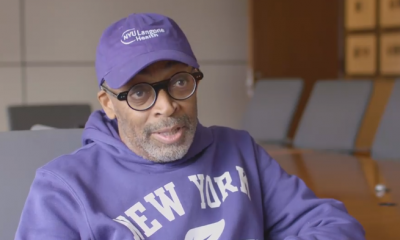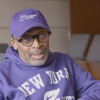Business & Health
HIV/AIDS Community Worries About Growing Infection Rate Among Young People
People around the world marked the 21st World AIDS Day with sober vigils, public demonstrations, mass HIV testing and other events designed to raise awareness about HIV/AIDS, which affects more than 33 million people worldwide.
HIV/AIDS advocates also used the occasion to step up pressure on governments for more funding for research, increased access to life-saving medicines for patients and resources that help create effective strategies for reducing the infection rate.
The 2009 World AIDS Day, which is held annually to raise funds, increase awareness, remove stigmas and improve HIV/AIDS education, came on the heels of encouraging data released by the World Health Organization and UNAIDS that said new HIV infections have declined globally by 17% over the last eight years.
The most dramatic decline was found in sub-Saharan Africa, where new HIV infections were about 15% lower, or 400,000 fewer in 2008.
HIV/AIDS organizations pointed to the use of HIV prevention efforts as a key factor in the declining infection rate, while pressing the need for more targeted HIV/AIDS programs to further reduce the amount of new cases.
“The good news is that we have evidence that the declines we are seeing are due, at least in part, to HIV prevention,” said Michel Sidibé, executive director of UNAIDS. “However, the findings also show that prevention programming is often off the mark and that if we do a better job of getting resources and programs to where they will make most impact, quicker progress can be made and more lives saved.”
Despite the encouraging statistics, HIV/AIDS organizations and counselors are particularly worried about the thousands of young people being infected each year, many of which aren’t even aware of their status.
People ages 15-24 account for about 45% of all new HIV infections, with an estimated 5.5 million young people living with HIV globally. In the U.S., the Centers for Disease Control and Prevention estimates that about 46,000 people ages 13-24 were living with HIV in the U.S in 2006.
Among African-American youth the infection rates are even bleaker. Young African-American adults are disproportionately affected by HIV, accounting for 60% of HIV/AIDS diagnoses in 13-to 24-year-olds in 2006.
“The global epidemic is important,” says Jacquel Clemons, Program Director for Project K.I.S.S., a New York-based HIV/AIDS testing and counseling group. “But what we have here domestically is important as well. When you think about HIV and the type of attention it gets, we still have a lot of work to do.”
With such a large stake in the outcome, HIV/AIDS organizations have sought to make young people central point of the world’s response.
But their efforts have been met by several challenges. Barriers to HIV prevention efforts for young people include their early exposure to sexual intercourse, community stigmas and a lack of awareness about the connection between HIV infection and poverty, which often translates to lack of access to high-quality health care.
Some studies have reported that young people with HIV/AIDS often fail to regularly adhere to their medication regiment. Young HIV/AIDS patients also sometimes engage in risky behavior, posing serious health risks for them and for transmitting the virus to others.
“Young people have a lot of information on the internet and other places,” Clemons says. “It’s a part of adolescent to feel invulnerable and that nothing can happen to me.”
Some HIV/AIDS awareness campaigns have been criticized for being ineffective in changing the behavior of young people and for failing to increase their knowledge about the disease.
Other prevention programs targeting young people have been discarded for not speaking frankly with young people, thus causing the message to lose creditability.
In some countries, the HIV education in schools focuses more on abstinence than discussions about safer sex despite little evidence to suggest the former approach is effective.
In some of the most recent findings to capture young people’s attitudes toward HIV/AIDS, a survey recently released by British bank Standard Chartered and AIESEC International found a low level of knowledge on HIV and AIDS among educated youths.
The student organization AIESEC surveyed 1,500 of its members, who spanned 99 countries. Although 84% of young people surveyed believed the HIV and AIDS epidemic remains one of the great challenges of our time, about 50% have a “dangerously” low knowledge about the disease, the report said.
What’s more, about 36% of respondents said they don’t think condoms are very effective in preventing sexual transmission and nearly a quarter admitted they would not always use a condom when having sex.
Targeting the Messages
At Project K.I.S.S, (Know your status, Inform your partners, Stay Safe), Clemons is at the front lines of the HIV/AIDS pandemic. The group reaches out to young people in New York, who are at risk of contracting HIV and other sexually transmitted diseases, through creative events that combine HIV messaging with common recreational activities that interest young people.
In 2009, Project K.I.S.S. held a fashion show in Harlem that chronicled the history of the disease using the models, HIV-themed segments and messages. In one scene, the models wore masks of Ryan White’s face to show his impact on HIV/AIDS movement. Most of the audience may have been too young to understand, or not even born, in the 1980s when White, a teenager living with AIDS, became the catalyst for AIDS research and awareness campaigns. The event also offered free HIV testing to those in attendance.
“The whole idea of youth being our future is real,” Clemons says. “There are some really great campaigns that are trying to target youth in the ways they understand and they are aesthetically appealing.”
Project K.I.S.S. is also planning to introduce its HIV prevention and knowing your status message to people at an upcoming ball competition, which are popular in the gay community.
The group continues to release facts about HIV/AIDS and information about its events on social networking sites Facebook and Twitter, which have been successful in generating a response from young people.
For the 21st World AIDS Day, Project K.I.S.S. provided HIV testing at a Brooklyn library, offering people a subway MetroCard as an incentive to know their status.
Heightening Awareness Globally
Globally, the world’s young people are a key constituency targeted by HIV/AIDS advocates.
The World AIDS Campaign, a global coalition of civil society groups that lists HIV campaigning and advocacy as a core part of their activities, in 2008 launched a program to help youth organizations champion HIV prevention, treatment and care for young people.
This year, the youth program has been focusing on young people who are impacted the most by the HIV/AIDS epidemic, including young people living with HIV, young women, young people who use drugs, young sex workers, young men who have sex with men and young migrants.
The initiative is just one example of thousands of other campaigns being conducted around the world to educate young people about the disease.
In schools and college campuses across the world, messages are being tailored for young people. Millions of dollars in airtime has been used for television, magazines, the internet and radio advertising that promote HIV testing to at-risk groups.
For World AIDS Day 2009, there was no shortage of ideas and creative methods of heightening awareness of the disease.
The hip-hop community, which has been an effective in drawing young people toward everything from clothing to politics, was tapped for several World AIDS Day events.
Alicia Keys held a concert in New York to commemorate World AIDS Day. Proceeds from the concert, which was presented by American Express, benefited Keys’ Keep a Child Alive foundation.
With YouTube streaming the concert live, Keys performed some of her top hits and new songs from her forthcoming album, The Element of Freedom. She was later joined on stage by Jay-Z for the finale “Empire State of Mind (Part II)”
MTV’s Staying Alive Foundation, which provides resources for projects that fight HIV/AIDS, has produced a documentary featuring Travis McCoy, lead singer of the alternative hip hop band Gym Class Heroes. Airing on MTV’s global network on World AIDS Day, the documentary followed McCoy to South Africa, the Philippines and India to show how young people are fighting back against the spread of HIV in their communities.












